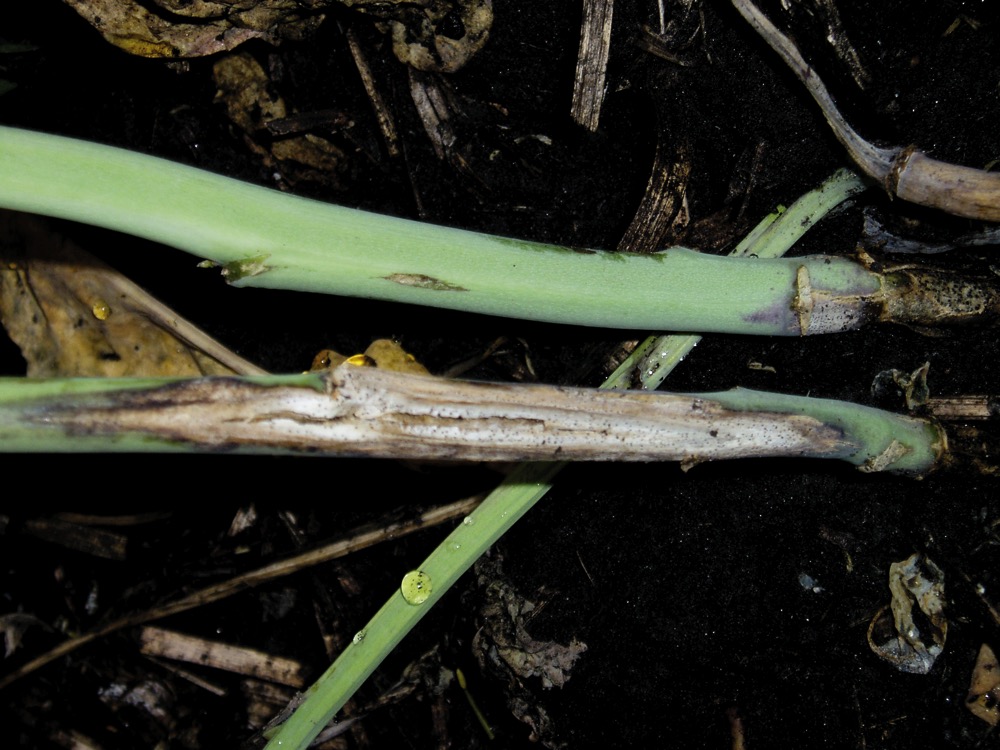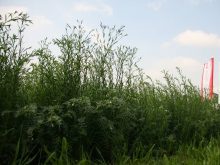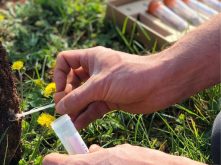New research that could lead to a biological alternative to chemical fungicides began with work into food safety. “We were interested in whether food-fermenting lactobacilli would produce molecules that prevent fungal growth,” says Dr. Michael Gaenzle, who is leading the research into antifungal lipids at the University of Alberta.
Gaenzle’s team came across some molecules produced by lactic acid bacteria that are similar to molecules produced by injured plants. “It appears that when plants are injured they produce a compound called coriolic acid which protects them against pathogens,” says Gaenzle. Now his research team is trying to prove whether his compound inhibit pathogens in plants or strengthens the plant’s defense against pathogens.
Read Also

Claas brings 1000 Series SP forage harvesters to Canada
In mid-August, Claas unveiled its new line of Jaguar forage harvesters at an event in Visalia, California, deep in the heart of that state’s dairy region.
The team has produced several compounds with antifungal activity, which is promising from the aspect of being able to produce fungicidal products that use natural compounds, rather than chemicals, to prevent disease.
“We are using compounds that are produced by plants as their own defense system,” says Gaenzle. “It’s similar to the use of probiotic material in human and animal health, where these organisms stimulate the host immune system, which allows us to better defend against pathogens. The same principle may be applicable for plant defenses because this compound, which is produced by the plant, is also a signalling compound, which activates the plant’s defense system. We may be able to get a dual activity so that we inhibit the fungi but also strengthen the plant’s immune system. That would be very interesting from a scientific point of view.”
Researchers are applying the compounds to plants infected with blackleg and other susceptible fungi in the lab to see the results on infection, and data from these experiments should be available soon.
Gaenzle is collaborating with chemistry professor, Dr. Jonathan Curtis and professor of biochemistry, Dr. Nav Kat at the University of Alberta. The project is funded by the Alberta Wheat Commission and the Western Grains Research Foundation.
Researchers have already discovered that the antifungal activity of these compounds is very selective, so their efficacy will depend on what disease pathogen they are dealing with. The organism that causes blackleg, and another that affects barley, Gaenzle says, “are reasonably sensitive to the fatty acids we produced, so we have a hope of being able to inhibit the organisms either after they attack the leaves or by treatment of the seeds,” says Gaenzle. “But a couple of other organisms including fusarium, are very resistant so I don’t think we have a great hope of being able to inhibit their growth on either the plant or to kill them on the seeds with these particular compounds.”
Scaling up production
One of the biggest barriers to developing these products for farm use is being able to economically produce the compounds in large quantities. It took the researchers about a year to produce enough for the initial experiments.
But the team believes there is potential make it available on an economic basis. “One source, which was unavailable at the time of project start, is a medicinal plant in Asia which contains 60 per cent of one of the active compounds. It is also relatively simple to produce the compounds using enzymatic reactions which we have mastered in the lab,” says Gaenzle. “I think there is great potential to scale that to an economical process, and if we can prove that these compounds are effective against blackleg, there will be justification to develop the process on a larger scale.”
The researchers are also trying to find out why some disease pathogens are resistant and others sensitive to the compounds. “If we can identify the target of the compounds in sensitive strains and the resistant mechanisms, then we will be able to answer whether it’s possible to circumvent that with the same class of compounds or do we have to abandon the approach to inhibit certain pathogens with hydroxy fatty acids,” says Gaenzle.
Using a plant’s own natural weapons to defend it against disease is an advantage in avoiding some of the negative associations with other fungicide products, but there is a drawback in using natural plant compounds. “The drawback is that we have to face the fungal resistance mechanisms which have evolved over a couple of million years of evolution, because for any compound that the plant is using in defense, some fungi will have developed resistance,” says Gaenzle. “I hope that we can identify the mechanisms that may allow us to circumvent it but we are not quite there yet.”
















